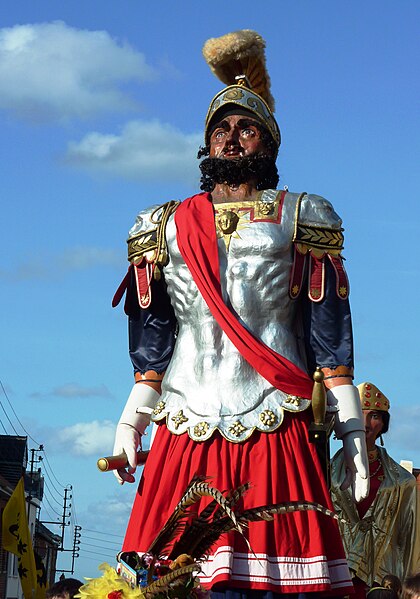Midsummer’s day or Midsommerdag is that time of year that is eclipsed in sacredness only by Yule (Joul) itself. It is when the whole community comes out to celebrate the summer solstice with the sunwandafūir and many more activities which were considered inkweðan ‘as how one should act’. Some of these activities included a procession, offerings, memory drinks, flower picking, the building of a nōdfūir ‘needfire’ and many more. There is a growing belief among reconstructionist heiðāni that the germans did not focus all their time and reverence upon the Sun. That the summer and winter solstices are but a natural break in the work year. This may be true of more strictly Germanic folks, but what we must remember when we look at the case of the Franks is that they were a confederacy of Germans, Celts (the differences between the two were/are largely exaggerated) and Romanised peoples. As such they were a culture that developed out of what we could term a Belgio-Germanic or Gallo (-Roman)-Germanic sub strata and the traditions that came to be were a blend of three close contact ethno-cultural groups. As such it is my and ORD’s belief that the traditions surrounding Midsummer (St. Jean) on the 24th of June harken back to a time when the ancient Belgians honoured the Sun at her peak as may have been influenced by their Celtic roots.
On the day before the celebrations of Midsommerdag, in Aerschot, there would be a procession led by the priest of St. Pierre Belgium Belgium France Switzerland Germany
In Grammont, in the 19th century, was where we drank the minna to St. Gertrude, they did so to St. Jean
The nōdfūir ritual is a very primitive one where a fire was built by means of friction. St. Elias had railed against such practices yet they persisted until very recently. It was customary to either use flint stones to light the fire or they would fall an oak, make a hole in it and with friction from a stick the blaze was lit for this fīringa. This fire had many healing properties, such as against hoof-rot in beasts, worms, warding lightning and more. The folk would offer herbs, flowers, cats and roosters into the fire as an offringa and would then jump over the blaze or dance around it. Men were thought to be kept from sickness and woman would have ease during childbirth. Animals were then processed through the ashes the next day and the coals were carried still hot around the fields. There is no end to the various rituals that were practiced around the nōdfūir and the ashes it gave the people.
What can be gathered from all these customs is that Midsummer was a very important time of the year. If we compare the Lady of the Sacred Oak to Frīa, it could be a good time to honour her as well Sunna who is exemplified by the primitive, yet necessary, ritual of the nōdfūir to either thank her or to ensure that the season unfolds in the best way possible. By burning flesh, herbs, flowers and bones, we can protect ourselves from diseases and harmful wihte by consuming the ashes of the fire and jumping through it. Waterways seem to gain more power to affect our lives and as such it may be recommended to give an offering to the water.
These are all ways in which we as keepers of the Aldsido can practice the customs of our ancient Frankish forefathers.
Erik


